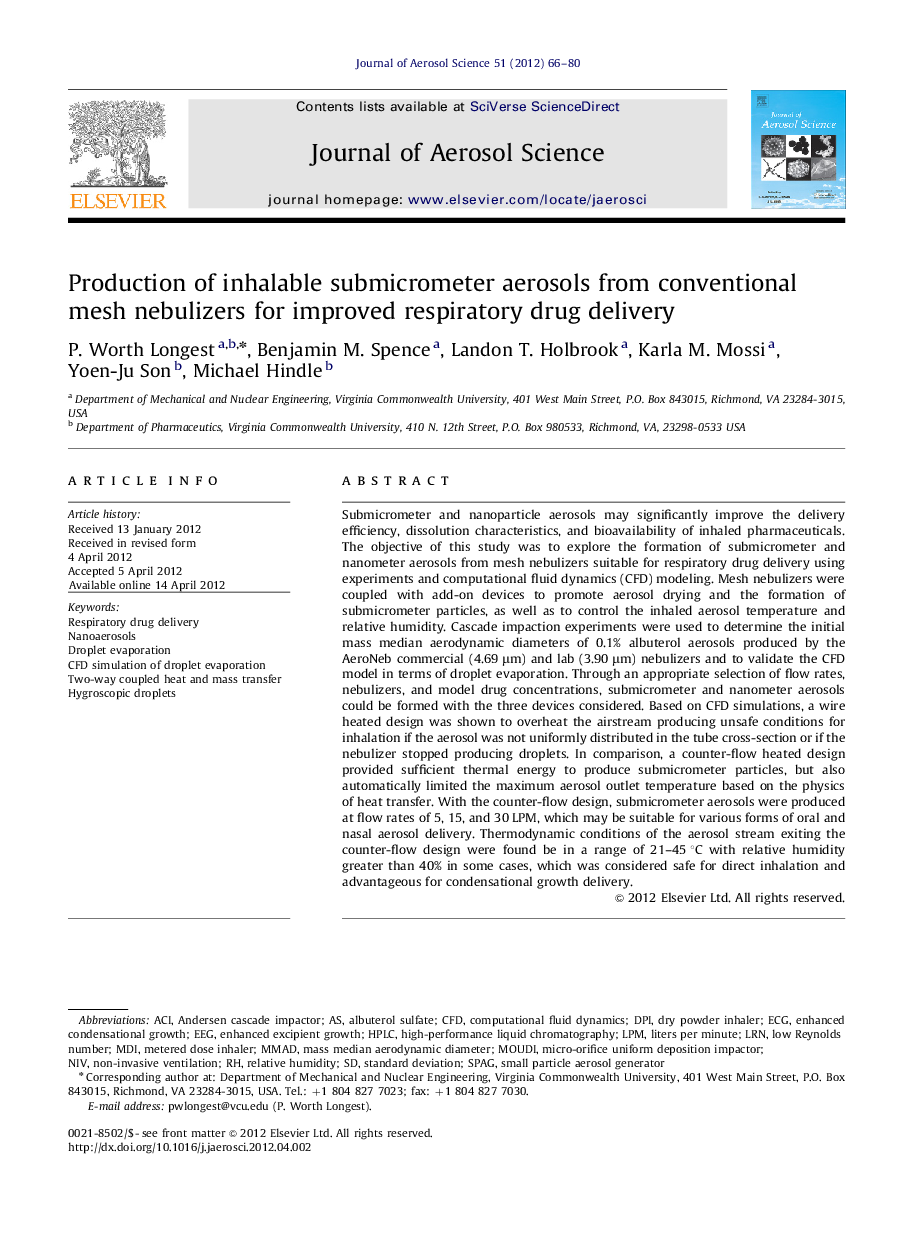| کد مقاله | کد نشریه | سال انتشار | مقاله انگلیسی | نسخه تمام متن |
|---|---|---|---|---|
| 4452617 | 1620772 | 2012 | 15 صفحه PDF | دانلود رایگان |

Submicrometer and nanoparticle aerosols may significantly improve the delivery efficiency, dissolution characteristics, and bioavailability of inhaled pharmaceuticals. The objective of this study was to explore the formation of submicrometer and nanometer aerosols from mesh nebulizers suitable for respiratory drug delivery using experiments and computational fluid dynamics (CFD) modeling. Mesh nebulizers were coupled with add-on devices to promote aerosol drying and the formation of submicrometer particles, as well as to control the inhaled aerosol temperature and relative humidity. Cascade impaction experiments were used to determine the initial mass median aerodynamic diameters of 0.1% albuterol aerosols produced by the AeroNeb commercial (4.69 μm) and lab (3.90 μm) nebulizers and to validate the CFD model in terms of droplet evaporation. Through an appropriate selection of flow rates, nebulizers, and model drug concentrations, submicrometer and nanometer aerosols could be formed with the three devices considered. Based on CFD simulations, a wire heated design was shown to overheat the airstream producing unsafe conditions for inhalation if the aerosol was not uniformly distributed in the tube cross-section or if the nebulizer stopped producing droplets. In comparison, a counter-flow heated design provided sufficient thermal energy to produce submicrometer particles, but also automatically limited the maximum aerosol outlet temperature based on the physics of heat transfer. With the counter-flow design, submicrometer aerosols were produced at flow rates of 5, 15, and 30 LPM, which may be suitable for various forms of oral and nasal aerosol delivery. Thermodynamic conditions of the aerosol stream exiting the counter-flow design were found be in a range of 21–45 °C with relative humidity greater than 40% in some cases, which was considered safe for direct inhalation and advantageous for condensational growth delivery.
Figure optionsDownload high-quality image (68 K)Download as PowerPoint slideHighlights
► Submicrometer and nanometer particles from mesh nebulizers with add-on devices.
► Experimental determination of initial aerosol size and evaporated size.
► Wire heated design produced excessive heating of the aerosol stream in some cases.
► Counter-flow heating produced dried particles with a limit to maximum temperature.
► Outlet temperatures with counter-flow design are safe for direct inhalation.
Journal: Journal of Aerosol Science - Volume 51, September 2012, Pages 66–80